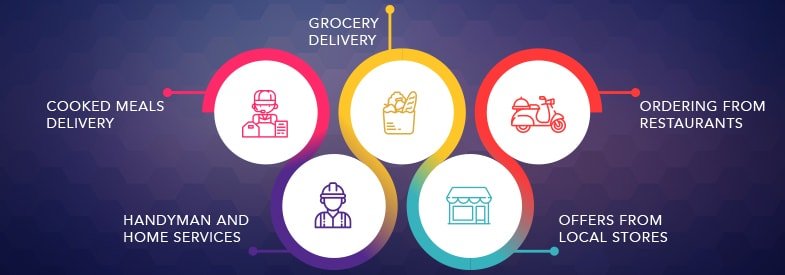Many elements of our life, including banking, are becoming more digital, which is true across the board. However, despite some reservations about the security of making financial transactions on mobile devices at the time, the recent pandemic caused many customers to modify their behaviors, even those who were previously resistant, such as senior consumers.
Customers were unable to turn back after they had experienced the greater convenience of digital banking solutions for themselves. The majority of individuals in every country around the globe use mobile smartphones and a variety of banking applications on a daily basis to check their accounts, make transfers, and pay bills. More than 1.9 billion people were actively using online banking services as of 2020, and analysts predict that the figure will rise to 2.5 billion by 2024 as banks continue to offer new, creative features and mobile applications.
New technologies and capabilities are being created all the time in the area of mobile banking, which is a very dynamic and inventive industry. Let’s explore some of the most important developments in mobile banking for the year 2022, as well as their implications for the banking sector.
Table Of Contents
Increased use of biometric authentication
Financial crimes such as fraud and money laundering are persistent concerns in all forms of banking, and mobile banking introduces new risks that were not present in conventional banking systems. As a result, banks use a range of “Know Your Customer” (KYC) and anti-money laundering (AML) measures in order to control risk in mobile banking transactions. KYC processes are also essential for ensuring compliance with a variety of legal and industry standards across countries, as well as continuing regulatory obligations like PSD2, GDPR, FATCA, and CRS, to name a few examples.
Traditional Know Your Customer (KYC) practices, on the other hand, are manual and time-consuming. It is necessary for them to collect extensive personal data, which can be frustrating for the customer and have a negative impact on the overall customer experience if not properly integrated into an overall digital journey. Banking institutions that rely on conventional Know Your Client (KYC) practices are compelled to combine compliance and risk management with customer delight, with one typically coming at the price of the other.
Because of biometric identification, this equation has been rewritten, providing the best of all worlds for banks and clients. It is more efficient and straightforward than conventional KYC procedures, resulting in a more smooth client experience. A mere sweep of a finger in a scanner or speaking into a voice identifier may eliminate the need for stacks of paperwork and time-consuming verification methods. Biometric technology also provides an additional layer of confidence and protection in online banking, as biometric markers are more credible and challenging, if not impossible, to recreate or hack than traditional authentication methods. Because of the obvious benefits of biometric authentication, banks are expected to extend their use of it in Know Your Customer (KYC) and other security processes in the future.
Widespread use of artificial intelligence and machine learning
Increasingly, banks are combining artificial intelligence (AI) and machine learning (ML) technology into new features and applications in the banking industry as the technology evolves. By predicting client demands and proactively offering items or services based on prior transactions and behaviors, artificial intelligence may be used to enhance customer service, for example. AI and machine learning may even make it simpler and quicker to process payments and transactions while also reducing the risk of human mistake that is inherent in any manual procedure, according to some researchers.
Using artificial intelligence for fraud detection, banks can spot atypical behavior patterns that might signal fraudulent activity, adding an additional layer of safety for both consumers and the bank itself while also enhancing the overall customer experience. Moreover, since AI and machine learning algorithms “learn” from their previous activity, they improve as time goes on, and their importance is expected to increase in the future.
Personalized banking experiences
Personalization is essential in today’s digital world, and banking is no different. Each customer has their own banking requirements and preferences, which they want banks, like other service providers, to meet at their convenience and in a manner that is most natural to them. Consumers will not accept one-size-fits-all and generic goods and services; if that is what banks are providing, customers will simply go elsewhere to do their financial business.
Consumers demand a smooth and customized customer experience across all channels, regardless of how they choose to communicate with their bank. Simply developing an app or a web portal isn’t enough. When conventional financial institutions are unable to keep up with the speed of change, customers search for alternatives to traditional financial institutions.
Banks must become more adaptable and innovative (using the Oracle digital banking experience) than they have ever been in order to stay competitive. Customer-facing teams should be given the authority to play a substantial role since they are the ones who are most familiar with the demands and preferences of customers. One of the most effective methods of achieving this aim is to provide citizen developers with no-code platforms to work with. With no-code platforms, non-technical workers may build and install apps that provide a more customized experience without being reliant on the availability and priority of overburdened IT teams.
The proliferation of mobile payments
Bartering was replaced by cash, credit cards were replaced by credit cards, and now mobile payments are taking the role of credit cards in many countries. The sole non-cash payment method regularly utilized in developing nations is mobile payments, which have replaced credit cards as the de facto standard. As a result, millions of individuals who lack access to conventional financial services and institutions are benefiting from mobile payment technology. In 2020, the worldwide mobile payment business was estimated to be worth $1.434 trillion, and that amount is only going to rise in the following five years.
As many as 125 million people are predicted to utilize mobile proximity payments by 2025, only in the United States. Moreover, half of Americans own a smartphone. Thus this figure represents a sizable market share. Gen Z, in particular, have a strong preference for mobile payment methods. Mobile payments are predicted to rise in popularity among older generations as they become the preferred method for many sorts of transactions and trade.
Continued growth in the number of fintech start-ups
For the last several years, the fintech sector has seen remarkable growth. Matrix Fintech Index has outperformed major public stock indices and traditional financial service providers for the sixth consecutive year. It is a market-cap weighted index that tracks a portfolio of prominent public fintech businesses.
Entrepreneurs are turning their attention to the financial industry because of the huge potential market. There were 26,346 fintech businesses around the globe in 2021, attracting a total of $210.1 billion in financing. You can see that a lot of new services and products are coming out of this. It may also lead to a lot more rivalry between banks. However, it doesn’t have to be that way. Numerous financial institutions are collaborating with fintech startups and implementing their cutting-edge solutions.
Conclusion
According to many analysts, the rise of mobile banking means that conventional banking will be phased out entirely by digital banking and OBDX as more individuals adopt a digital-only lifestyle. One thing is absolutely certain, however, when it comes to the future of mobile banking: the client experience will be at the forefront. Investing in the correct customer journey and offering knowledgeable customers the smooth, customized experience they’ve come to expect is essential for banks to flourish in the competitive financial world.


